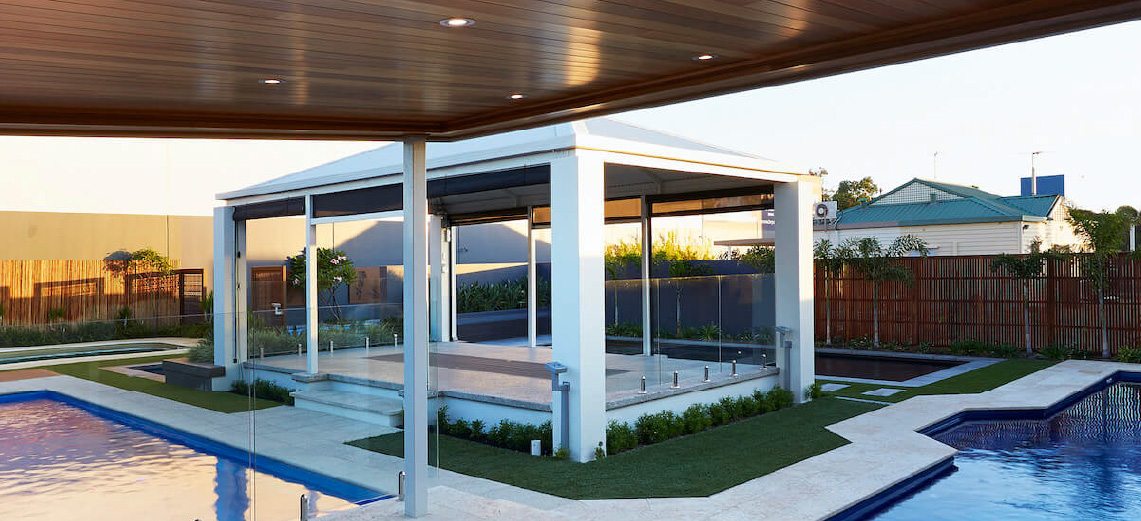
Which Travertine Pavers To Choose For High-Traffic Areas?
In the world of outdoor design, the choice of materials can make or break the functionality and aesthetic of your space. Travertine pavers have emerged as a popular choice among homeowners who yearn for a blend of beauty and practicality. Known for their timeless appeal and versatile application, these natural stone pavers add a touch of elegance to any outdoor area. But when it comes to high-traffic zones, not all travertine pavers are created equal. This guide dives deep into the ins and outs of selecting the perfect travertine pavers for areas that see a lot of footfall.
Travertine Pavers Unveiled
Travertine, a type of limestone formed around mineral spring deposits, has been used in architecture and design for centuries. It is characterised by its earthy tones and distinctive veining, which lend a sophisticated yet natural look to outdoor spaces. Homeowners prize travertine for its ability to stay cool underfoot, making it an excellent choice for patios, pool decks, and pathways. Its enduring popularity is a testament to its unmatched beauty and functionality in various settings.
In outdoor environments, travertine pavers are celebrated not just for their aesthetic appeal but also for their durability and versatility. They can seamlessly blend with different styles, from rustic to contemporary, offering homeowners the flexibility to create outdoor spaces that reflect their personal taste. Additionally, travertine pavers come in various finishes and sizes, allowing for customisation according to specific design goals.
For homeowners considering travertine, it’s important to understand its composition and benefits. Unlike manufactured pavers, travertine is a natural stone, meaning its hues and patterns are entirely organic. This uniqueness enhances the charm and value of any property. The porous nature of travertine, while contributing to its cooling properties, also requires some consideration in terms of sealing and maintenance.

Identifying High-Traffic Areas
High-traffic areas in outdoor spaces are those sections that endure frequent use and constant footfall. These might include your home’s entrance walkway, a busy garden path, or a well-loved patio where family gatherings take place. In such areas, the choice of pavers becomes crucial, impacting both the longevity of the surface and the safety of its users.
Choosing the right pavers for high-traffic zones is vital for several reasons. First, these areas suffer the most wear and tear, so the pavers must withstand constant pressure and movement without showing signs of deterioration. Second, high-traffic surfaces must be safe to walk on, reducing the risk of slips and falls, particularly in wet conditions.
An often overlooked aspect of high-traffic areas is their role in the overall landscape design. They serve not only as functional pathways but also as visual connectors between different parts of your garden or property. Selecting pavers that harmonise with the surrounding environment will enhance the cohesive look of your outdoor space, making it more inviting and enjoyable.
Exploring Travertine Paver Options
Travertine pavers come in several varieties, each with unique characteristics that suit different applications. The three most common types are tumbled, honed, and brushed. Understanding their features will help you make an informed decision about which travertine paver best fits your needs.
Tumbled travertine pavers
are known for their soft edges and antiqued appearance. The tumbling process involves placing the stones in a drum with abrasive materials, which gently round the edges and create a weathered look. This makes them an excellent choice for homeowners seeking a rustic or traditional aesthetic in their outdoor spaces.
Honed travertine pavers
offer a smooth, matte finish that eliminates the natural pits found in the stone. This finish is achieved by sanding the surface to a flat, consistent texture. Honed pavers are ideal for modern designs, providing a sleek look that is less likely to become slippery, making them suitable for high-traffic areas like pool decks and garden paths.
Brushed travertine pavers
have a slightly textured surface, achieved by brushing the stone with a wire brush after honing. This finish enhances the stone’s natural beauty while adding subtle texture that improves slip resistance. Brushed pavers are versatile, offering a middle ground between the rustic appeal of tumbled pavers and the contemporary elegance of honed pavers.

Key Considerations for Selection
When selecting travertine pavers for high-traffic areas, durability should be at the forefront of your decision-making process. These pavers must withstand heavy use without succumbing to wear and tear. Look for high-density travertine, which offers greater resistance and longevity compared to lower-density options.
Slip resistance is another crucial factor. High-traffic areas, especially those exposed to water, require surfaces that provide traction. Choosing a textured finish, such as brushed or tumbled, can enhance slip resistance and ensure safety for everyone using the space. Additionally, selecting lighter shades of travertine can help keep the surface cool, further reducing the risk of slips.
Maintenance needs should also guide your choice. While travertine is relatively low-maintenance, it does require regular cleaning and sealing to protect against stains and weathering. Consider how much time and effort you’re willing to invest in upkeep when choosing the appropriate finish and density of your pavers.
Caring for Your Travertine Pavers
Maintaining travertine pavers involves regular cleaning and sealing to preserve their appearance and functionality. Routine cleaning with a mild detergent and water will remove dirt and debris, preventing them from embedding into the stone’s surface. Avoid harsh chemicals, as they can damage the natural finish of travertine.
Sealing the pavers is crucial for protecting against stains and moisture absorption. Sealing should be done every one to two years, depending on the level of exposure and wear. A quality sealant will penetrate the stone and provide a barrier against liquids and dirt, keeping your pavers looking fresh and new.
Addressing any damage promptly is essential to prevent further deterioration. Small chips or cracks can be fixed with stone filler, while more extensive damage may require professional repair. Regularly inspect your pavers for signs of wear and take action to address issues early, ensuring the longevity of your outdoor surfaces.
Wrapping Up the Travertine Choice
Choosing the right travertine pavers for high-traffic areas combines aesthetics with practicality. By understanding the available paver types and key factors, homeowners can make informed decisions that enhance the beauty and functionality of their outdoor spaces. A well-chosen paver withstands the test of time while adding value and appeal to your home.
Investing in quality travertine pavers and proper installation ensures that high-traffic areas remain safe, attractive, and durable for years. With regular maintenance, these natural stone surfaces will enrich your outdoor living experience, creating a welcoming environment for family and friends.
For homeowners looking to transform their outdoor spaces with travertine pavers, seeking advice from design professionals or local suppliers can be beneficial. Their expertise can help you choose the perfect paver and installation method, maximising your investment.






